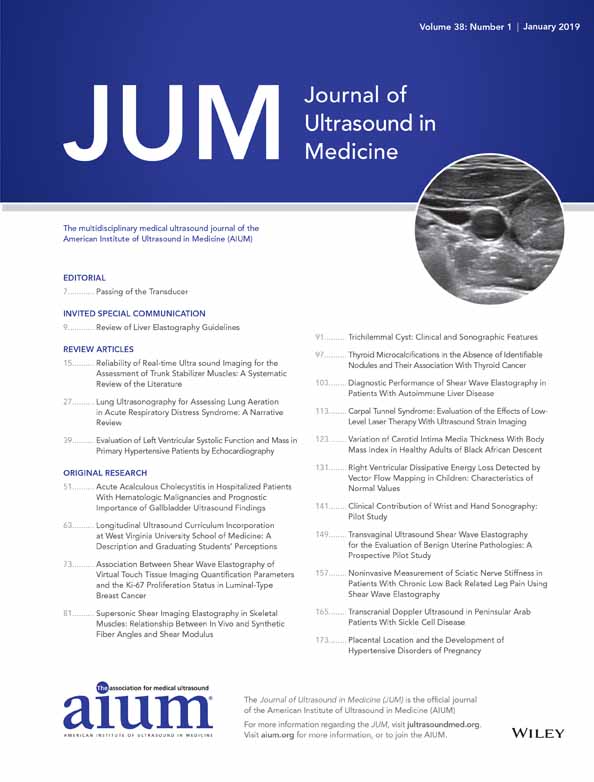Trichilemmal Cyst: Clinical and Sonographic Features
This research was supported by Beijing Municipal Natural Science Foundation (ID: 7162201).
Abstract
Objectives
In this study, we retrospectively reviewed the clinical and sonographic features of patients with trichilemmal cysts.
Methods
Sonographic findings of 54 cases of trichilemmal cysts were retrospectively analyzed from 50 patients, including 4 cases of proliferating trichilemmal cysts. Associated factors of internal calcification–positive cases were also evaluated.
Results
The mean age of the 50 patients was 43.4 years (range, 15−80 years) and the female-to-male ratio was 1.3. Overall, 68% of the trichilemmal cysts in the 54 lesions were located in the scalp, and 15% were located in the extremities. All 54 lesions were preoperatively examined by sonography and showed well-defined, oval-shaped structures located in subcutaneous soft tissues close to the dermis. Of the 54 lesions, 72% were hypoechoic masses, 89% were heterogeneous, and 65% had internal calcification. Among the internal calcification–positive cases, the mean age of the patients was 43.4 years, and the female-to-male ratio was 0.6. Of these lesions, 83% were located in the scalp. We did not find any significant association between calcification, age, or sex (P = .993 and P = .99); however, lesions present in the scalp were significantly associated with internal calcification (P = .005). 81% of the 54 lesions displayed posterior enhancement. but the color Doppler sonography of all lesions revealed no vascularization.
Conclusions
Trichilemmal cysts should be considered to diagnose of well-defined, hypoechoic lesions with internal calcification and posterior sound enhancement in the subcutaneous soft tissues of the scalp or extremities upon sonography.




